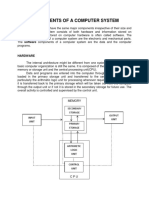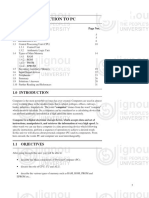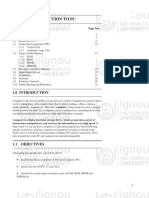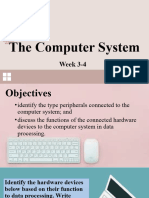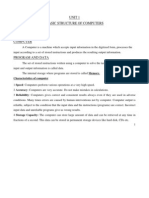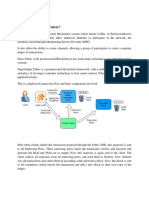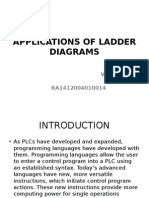XI - Commerce & Arts
Information Technology
Practical No. 1
Identification of Computer components & understanding Lab set up
1) Computer
• A computer is a programmable machine designed to sequentially and
automatically carry out a sequence of arithmetic or logical operation.
• The basic components of a computer are –
Input Unit
• This unit contains devices with the help of which we enter data into
computer. This unit makes link between user and computer. The input
devices translate the information into the form understandable by computer.
CPU (Central Processing Unit)
• CPU is considered as the brain of the computer. CPU performs all types of
data processing operations. It stores data, intermediate results and
instructions (program). It controls the operation of all parts of computer.
1
� • CPU itself has following three components
1) ALU(Arithmetic Logic Unit)
2) Memory Unit
3) Control Unit
Output Unit
• Output unit consists of devices with the help of which we get the
information from computer. This unit is a link between computer and users.
Output devices translate the computer's output into the form understandable
by users.
2) Components of computer
• Computer system consists of hardware and software. A combination of
hardware and software forms a usable computing system.
• Computer hardware (usually simply called hardware when
a computing context is implicit) is the collection of physical elements that
constitutes a computer system.
• Computer Software is any set of machine-readable instructions that directs
a computer's processor to perform specific operations.
• Computer hardware
a. Mother board
2
�• A motherboard (sometimes alternatively known as
the mainboard, system board, planar board or logic board) is the
main printed circuit board (PCB) found in computers and other expandable
systems. It holds many of the crucial electronic components of the system,
such as the central processing unit (CPU) and memory, and provides
connectors for other peripherals.
b. RAM
• RAM (Random Access Memory) is a form of computer data storage. A
random-access memory device allows data items to be read and written in
approximately the same amount of time regardless of the order in which
data items are accessed.
c. Cables
3
�• A cable comprises two or more wires running side by side and bonded,
twisted, or braided together to form a single assembly, the ends of which
can be connected to two devices, enabling the transfer of signals from one
device to the other.
d. ROM
• Read-only memory (ROM) is a class of storage medium used
in computers and other electronic devices. Data stored in ROM can only be
modified slowly, with difficulty, or not at all, so it is mainly used to
distribute firmware (software that is very closely tied to specific hardware,
and unlikely to need frequent updates).
e. Processor
4
�• A processor is the logic circuitry that responds to and processes the
basic instructions that drives a computer.
• The term processor has generally replaced the term central processing unit
(CPU). The processor in a personal computer or embedded in small devices
is often called a microprocessor.
• Computer software – Software is often divided into two categories
1. System Software – System Software has direct control and access to
your computer hardware, and memory locations.
2. Application Software – Application Software runs under System
Software, and are made to do a specific task, which have indirect
access to the hardware.
• The World inside COMPUTER –
https://www.youtube.com/watch?v=AkFi90lZmXA
• Working of Operating Systems -
https://www.youtube.com/watch?v=5AjReRMoG3Y
• Computer Networks
https://www.youtube.com/watch?v=4_zSIXb7tLQ
